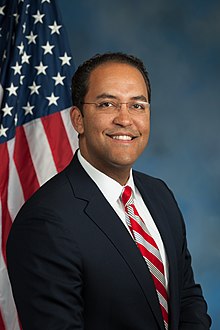
Beto O’Rourke photo from his Facebook page.
Beto O’Rourke reached out via an e-mail and, since I’ll be traveling for the Oscar weekend, I’m going to break it up into smaller sections and share it with those of you who have, perhaps, not received it. I probably received it because I contributed to his campaign against Ted Cruz; I am in Texas. We are likely to hear a lot more about Beto O’Rourke, I think, so hear him out, in smaller segments. Thanks!
Connie:
The President came to El Paso last week. He promised a wall and repeated his lies about the dangers that immigrants pose. With El Paso as the backdrop, he claimed that this city of immigrants was dangerous before a border fence was built here in 2008. (*Untrue, El Paso was named the nation’s 2nd safest city after San Jose, California in one poll).
El Paso was one of the safest communities in the United States before the fence was built here. The president said the wall saves lives. In fact, walls push desperate families to cross in ever more hostile terrain, insuring greater suffering and more deaths. He spoke about immigrants and crime, when immigrants commit crimes at a lower rate than Americans born here. It’s worth thinking about how we got to this place.
How did it come to be that 11 million undocumented immigrants call America home? How did we come to militarize our border? How did we arrive at such a disconnect between our ideals, our values, the reality of our lives, and the policies and political rhetoric that govern immigration and border security?
I’ve come to the conclusion that the challenges we face are largely of our own design—a function of the unintended consequences of immigration policy and the rhetoric we’ve used to describe immigrants and the border. At almost every step of modern immigration policy and immigration politics, we have exacerbated underlying problems and made things worse. Sometimes with the best of intentions, sometimes with the most cynical exploitation of nativism and fear.
Much of the history of immigration policy, and the source for the data that I’m using, is powerfully summarized in a report entitled “Unintended Consequences of U.S. Immigration Policy: Explaining the Post-1965 Surge from Latin America,” by Douglas S. Massey and Karen A. Pren.
In 1965, the United States ended the bracero farm-worker program, in part because of the sub-standard wages and conditions in which these Mexican workers labored. And yet, after decades of employing this labor, with our economy dependent on the laborers and the laborers dependent on access to the U.S. job market, the system of low-cost Mexican labor didn’t go away. Many of the same Mexican nationals returned to the U.S., returned to the same back-breaking jobs, only now they were undocumented. Ironically, despite the intent of the 1965 law ending the program, they enjoyed fewer protections and wage guarantees in the shadows as they continued to play a fundamental role in our economy.
As this same population converted from being documented to undocumented, a wave of scary metaphors was employed to gin up anxiety and paranoia and the political will to employ ever more repressive policies to deter their entry. It was good for politicians and newspapers, but terrible for immigrants and immigration policy. Thus began the “Latino threat” narrative.
As Massey and Pren wrote:
“The most common negative framing depicted immigration as a ‘crisis’ for the nation. Initially, marine metaphors were used to dramatize the crisis, with Latino immigration being labeled a ‘rising tide’ or a ‘tidal wave’ that was poised to ‘inundate’ the United States and ‘drown’ its culture while ‘flooding’ American society with unwanted foreigners (Santa Ana 2002). Over time, marine metaphors increasingly gave way to martial metaphors, with illegal immigration being depicted as an ‘invasion’ in which ‘outgunned’ Border Patrol agents sought to ‘hold the lin’ in a vain attempt to ‘defend’ the border against ‘attacks’ from ‘alien invaders’ who launched ‘banzai charges’ to overwhelm American defenses.” (Nevins 2001; Chavez 2008).
The fear stoked by politicians produced the intended paranoia and political constituency demanding ever tougher immigration measures. The result of this was not to stop undocumented immigration.
Instead, it caused the number of undocumented immigrants in the United States to grow.
(Beto O’Rourke’s words continued tomorrow)











 Our time share at the Royal Islander will return to the state in 5 years, when the 30 years is up. We are now at 25 years and counting. After this year, we will only have 2020, 2021, 2022, 2023 and 2024 and then we will have to rent at the Sands or make other arrangements.
Our time share at the Royal Islander will return to the state in 5 years, when the 30 years is up. We are now at 25 years and counting. After this year, we will only have 2020, 2021, 2022, 2023 and 2024 and then we will have to rent at the Sands or make other arrangements.
 Ava and Elise enjoy the beach at the Royal Sands in Cancun, Mexico. They left at 5 a.m. and were on the beach by 9 a.m.
Ava and Elise enjoy the beach at the Royal Sands in Cancun, Mexico. They left at 5 a.m. and were on the beach by 9 a.m.


 Read a horrifying in-depth article (“New York Times”) about Michigan’s schools, which have largely been turned over to a topsy-turvy crazy quilt of Charter schools, which are not doing any better a job with the students than the public schools they replaced. Truly sounds like a nightmare scenario, but this is the scenario that Betsy DeVos, Secretary of Education, has always tried to foster. She is a native of Michigan and a huge proponent of charter schools, despite her own home state’s dismal record. She also has absolutely not one credential for occupying the position of Secretary of Education.
Read a horrifying in-depth article (“New York Times”) about Michigan’s schools, which have largely been turned over to a topsy-turvy crazy quilt of Charter schools, which are not doing any better a job with the students than the public schools they replaced. Truly sounds like a nightmare scenario, but this is the scenario that Betsy DeVos, Secretary of Education, has always tried to foster. She is a native of Michigan and a huge proponent of charter schools, despite her own home state’s dismal record. She also has absolutely not one credential for occupying the position of Secretary of Education.






